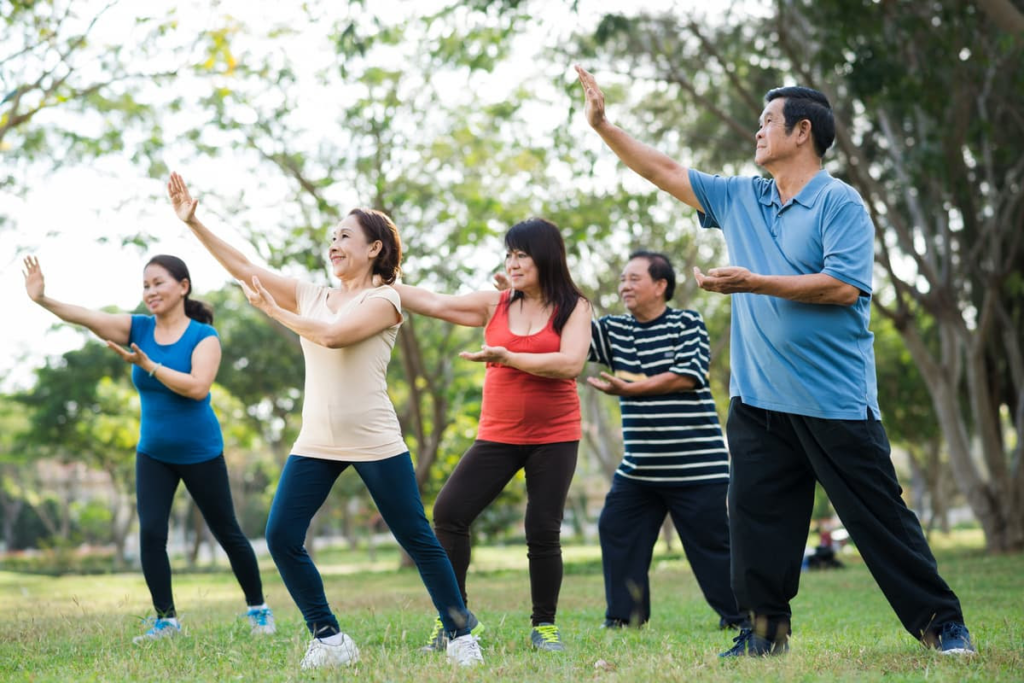By Paul McClure

Tai chi was found to be better than aerobic exercise at lowering problematic high blood pressure Depositphotos
A new study has found that tai chi was significantly more effective than aerobic exercise at lowering blood pressure in 18-to-65-year-olds with prehypertension, a condition that can progress to high blood pressure and other cardiovascular diseases. The findings suggest there’s value in practicing tai chi to improve heart health.
People with prehypertension are at increased risk of hypertension (high blood pressure), cardiovascular disease, coronary heart disease, stroke, and heart attack. Defined as a systolic blood pressure (SBP) or 120 to 139 millimeters of mercury (mmHg) and/or a diastolic blood pressure (DBP) of 80 to 89 mmHg, prehypertension can serve as a warning sign, warranting early diagnosis and intervention to reduce the risk of complications.
In a new study by the China Academy of Chinese Medical Sciences (CACMS), researchers examined the effectiveness of tai chi in reducing blood pressure, compared to aerobic exercise.
Increasing evidence suggests that exercise helps lower blood pressure in people with prehypertension or hypertension. Aerobic exercise is so-called because it increases the heart rate and the amount of oxygen the body uses and includes things like walking, cycling, and swimming. Tai chi could be seen as the opposite of aerobic exercise: comprising slow, gentle movements and postures, it relies on a meditative mind and controlled breathing.
While studies have shown that tai chi can reduce blood pressure after weeks to months of practice, there’s little evidence that it’s better than aerobic exercise in the setting of prehypertension.
The researchers recruited 349 participants aged 18 to 65 (51.5% women) with defined prehypertension, who were randomized into a tai chi group or an aerobic exercise group. Both groups performed four 60-minute supervised sessions a week for 12 months. The tai chi group performed Yang-style tai chi, which included 24 standard movements or forms; aerobic exercise interventions included climbing stairs, jogging, brisk walking, and cycling. Blood pressure was assessed at baseline and at six and 12 months. The primary outcome was the mean change in SBP from baseline to 12 months, measured in an office setting and while walking.
After 12 months, the mean change in office SBP differed significantly between the groups. In the tai chi group, it was –7.01 mmHg compared to –4.61 mmHg in the aerobic exercise group. The tai chi group also showed a greater reduction in 24-hour (–2.16 mmHg) and nighttime (–4.08 mmHg) ambulatory SBP than the aerobic exercise group. A reduction in office SBP of at least 10 mmHg was seen in 35.3% of tai chi participants compared with 27.8% in the aerobic exercise group.
At the study’s conclusion, 21.8% of the tai chi group showed blood pressure within the normal range without medications, whereas 15.6% of the aerobic exercise group showed the same. Fewer patients had progressed to hypertension in the tai chi group compared to the aerobic exercise group (12.0% vs 17.7%).
The researchers suggest that a potential explanation for the findings is that tai chi reduces the excitability of the sympathetic nervous system and produces a relaxing effect.
“In this randomized clinical trial, conducted in office and 24-hour ambulatory conditions, 12 months of tai chi was more effective than aerobic exercise in reducing SBP in patients with prehypertension,” said the researchers. “These findings support the important public health value of tai chi to promote the prevention of cardiovascular disease in populations with prehypertension.”
The study was published in the journal JAMA Network Open.
Source: CACMS via Scimex

Leave a Reply